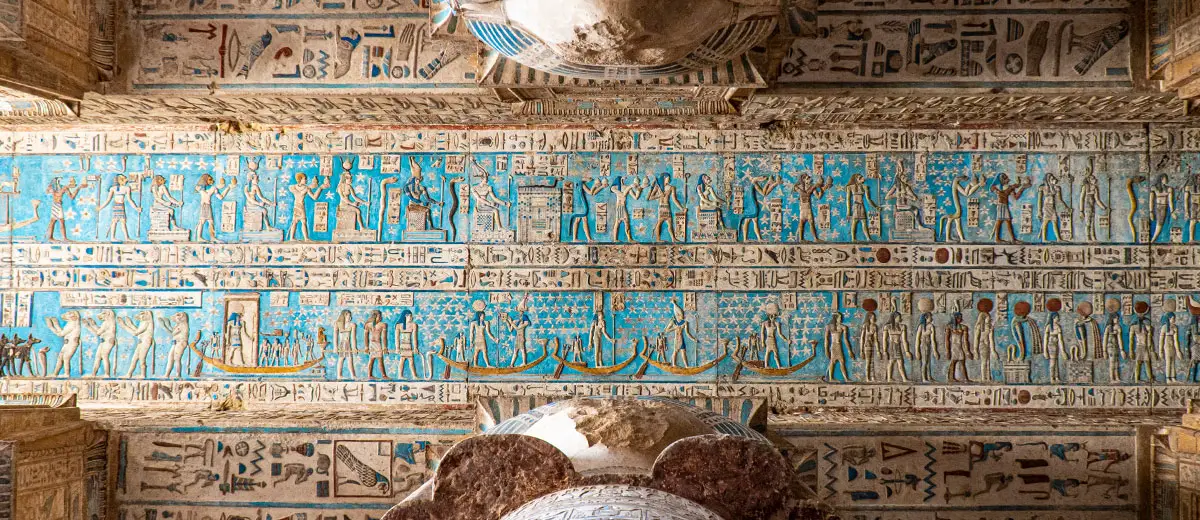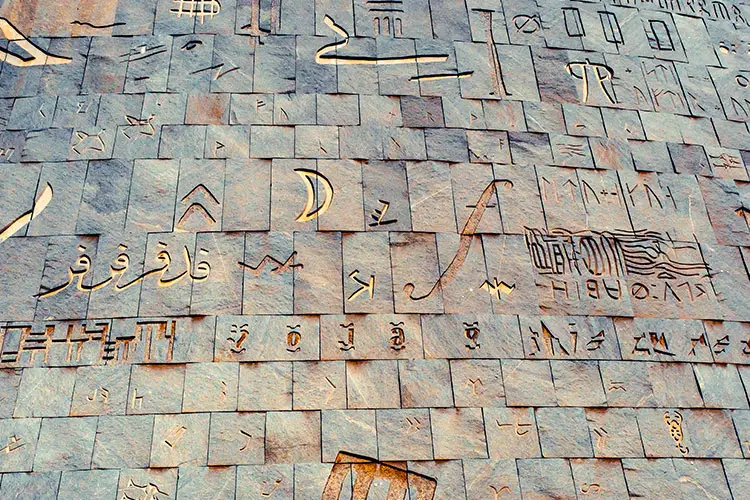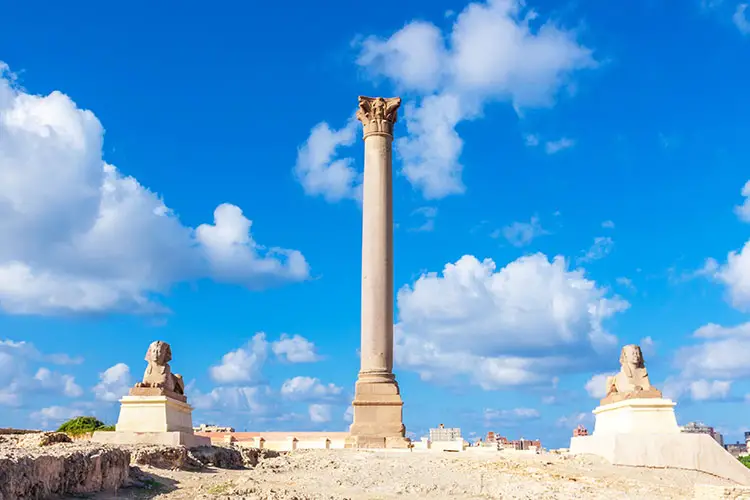The Best Places to See Ruins of Ancient Egypt | An Epic Historial Roadtrip
The ruins of Ancient Egypt are some of the most spectacular from the ancient world and are, thankfully, conveniently positioned along the Nile River. There is no doubt that Cairo and Luxor contain the most famous of the Ancient Egyptian ruins. However, if you were to plot on a map the world-famous pyramids in the north and all of the sculpture ladened temples of the south, you would be hard-pressed not to utter the words “Road Trip”!
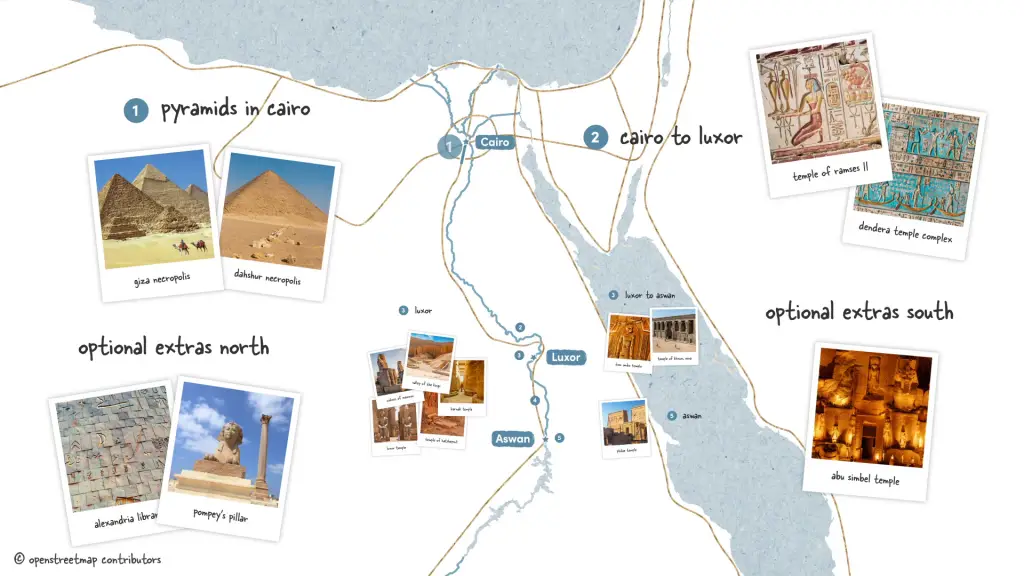
Contents
- Luxor
- Cairo
- Cairo to Luxor
- Luxor to Aswan
- Aswan & The South
← Watch Out!
Keep an eye out for the bucket-list icon! There are examples and photos of famous sites and relics sprinkled throughout this guide that pertain to each location. This article is part of a three-part series on Ancient Egypt. There are more of the famous sites featured in both A Brief History of Ancient Egypt and What Ancient Egypt was Known For if you’re interested in reading those too.
Luxor
Not only would it be a total cliche to put Cairo at the top of this list! I would also argue that Luxor exhibits much greater influence and importance when considering all of Ancient Egyptian history. From the end of the 1st Intermediate Period to the end of the New Kingdom, Ancient Thebes was the cornerstone and last bastion of Egyptian civilization.
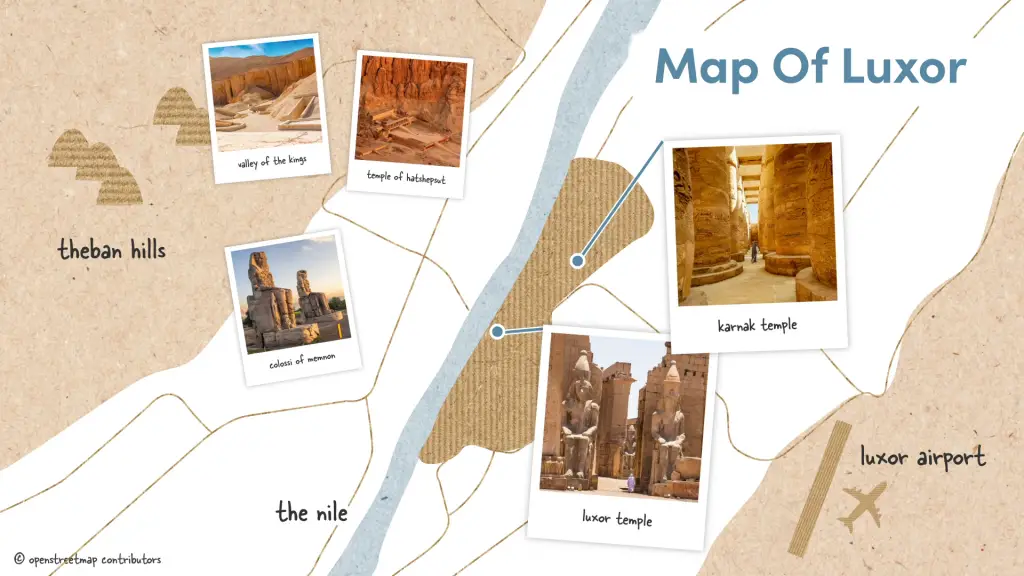
Aside from its downtown temples—Luxor Temple and Karnak Temple Complex—Luxor is home to the Valley of the Kings, Valley of the Queens and the Mortuary Temple of Hatshepsut, all of which are just across the Nile on the eastern side of the city. Luxor also has an International Airport, making it logistically easy to visit and its close proximity to other top sites such as the Dendera Temple Complex make it hard to place below Cairo as the best place to see Ancient Egyptian ruins.
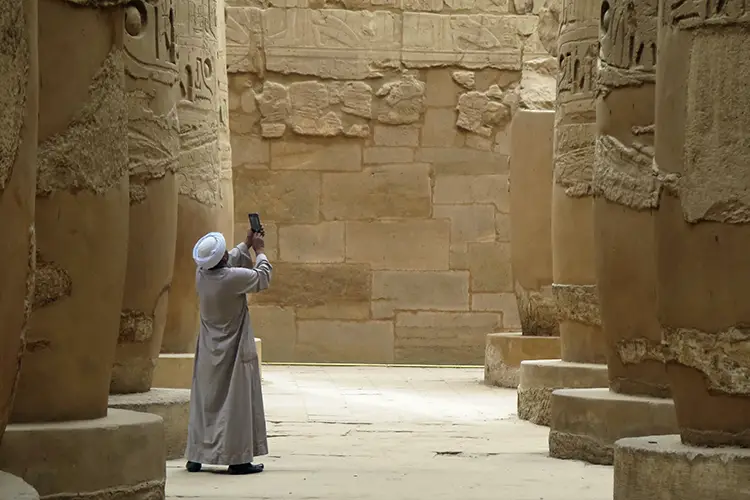
Luxor Temple
There are two great temple complexes in downtown Luxor: Karnak Temple Complex and this one, Luxor Temple. They sit around 3 km apart on the east bank of the Nile—Luxor Museum is right in the middle, also on the east bank—so it would be a real shame to visit one without the other.
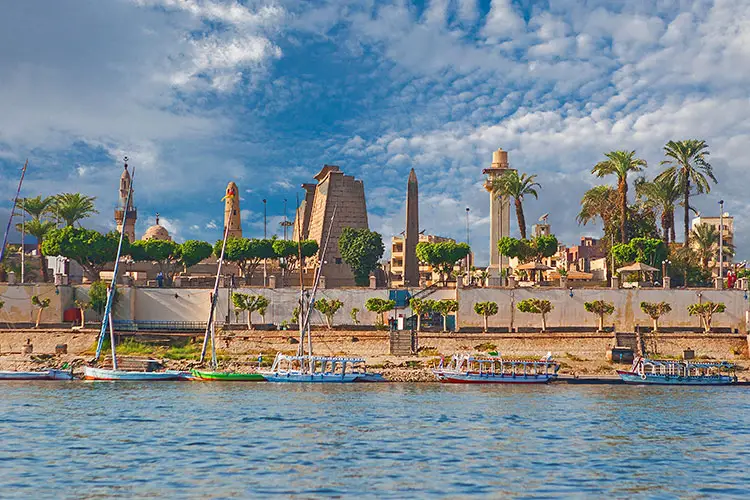
In contrast to many of the other temples from Ancient Egypt, Luxor Temple wasn’t dedicated to a specific god, instead, it was used as a coronation complex where new kings would officially ascend to the throne. There are several points of interest not least of which is the architecture; Luxor Temple has some very unique columns exhibiting ribbed shafts and capitals, the likes of which I have not noticed before in Egypt. The Avenue of Sphinxes—a walkway lined with Sphinx statues—leads up to the temple entrance where you can also see the Obelisk of Ramses II.
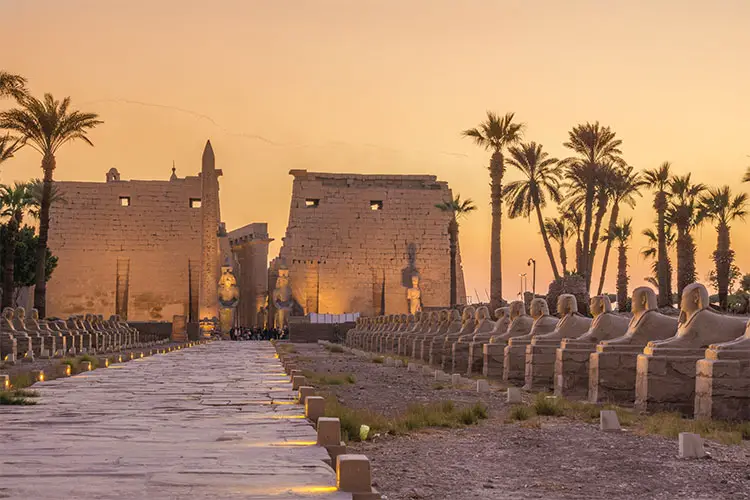
In similar fashion to the Hagia Sophia in Turkey, the religious use of the temple has changed many times over its 3400-year history; the temple was first turned into a church by the Romans and is now used as a mosque, making it the oldest “active” building in the world i.e. not being used solely for touristic purposes.
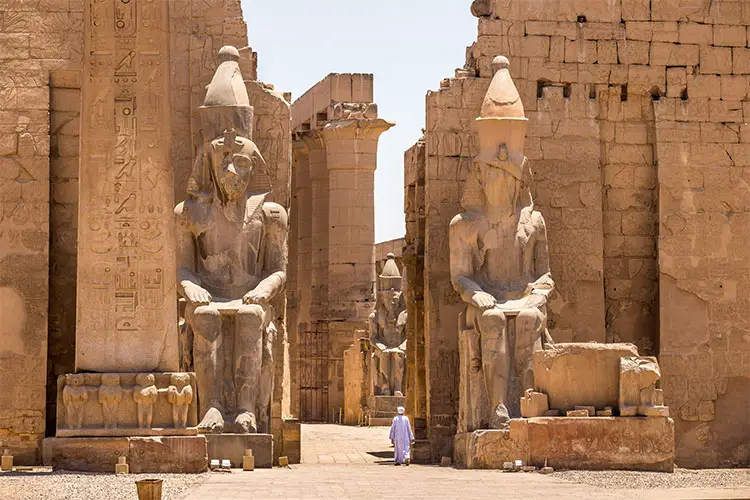
Colossi of Memnon
This pair of gigantic sandstone statues sit in the Theban Necropolis facing east towards the rising sun. They were built somewhere around 1350 BC and are the remaining legacy of pharaoh Amenhotep III. The statues were once part of an equally gigantic temple complex, which, in its day, would have dwarfed that of Karnak. Unfortunately, thanks to a combination of flooding, erosion and earthquakes, little remains of the temple and the two damaged statues are all that stand.
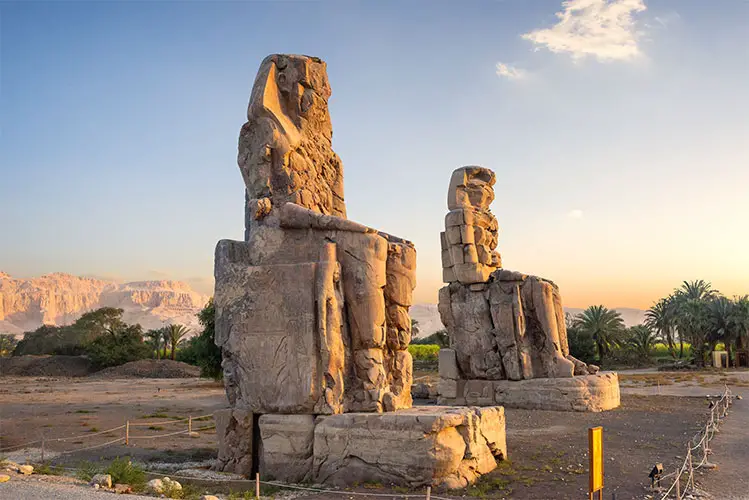
The figures represent Amenhotep III himself in a seated position with two smaller sculptures on the side of his legs depicting his wife, Tiye and his mother, Mutemwiya. The building blocks for these statues are said to be from Cairo and—being too heavy to transport by boat—would have been hauled almost 700km overland, making these incredible statues all the more mesmerising.
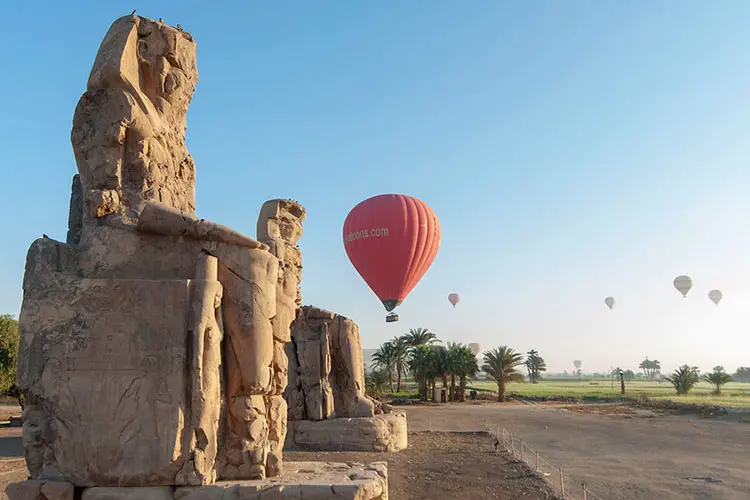
Cairo
A close second, Cairo and its surrounding area contain by far the best ruins of the Old Kingdom; the three most important necropoli from this period—Giza, Saqqara and Dahshur—are all within 40km of the city centre. If you’d like to read a little more about The Pyramids at Giza, check out What Ancient Egypt was Known For.
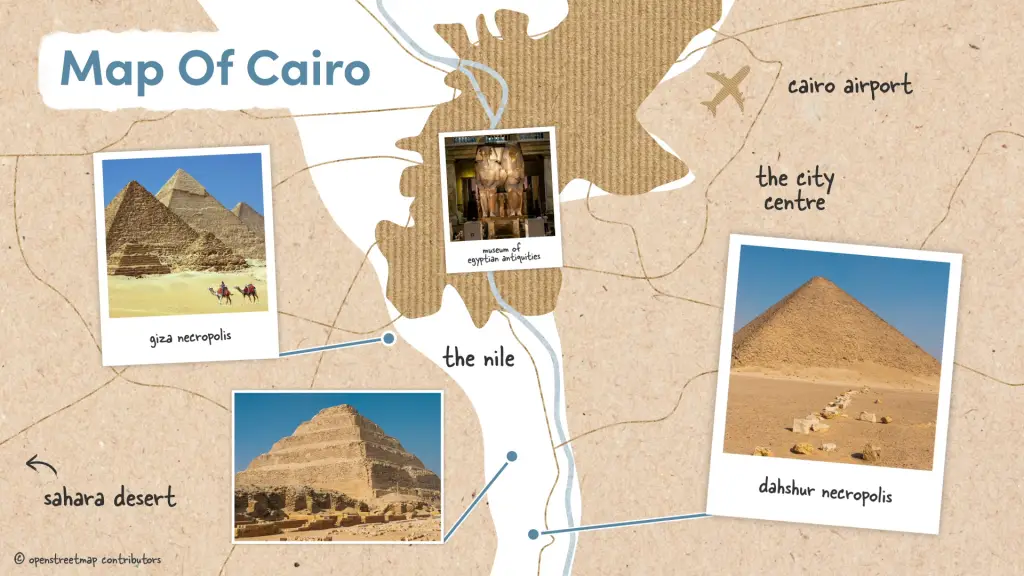
In addition to these burial sites, there are several fantastic museums. Being Egypt’s modern-day capital, Cairo has a lot more to offer than just pyramids and museums; of note, both the Mosque of Muhammad Ali and the Khan el-Khalili bazaar are well worth checking out. The capital is served by the Cairo International Airport—the second busiest airport in Africa—and also boasts the Cairo Metro, making it one of the easiest cities to visit on the continent.
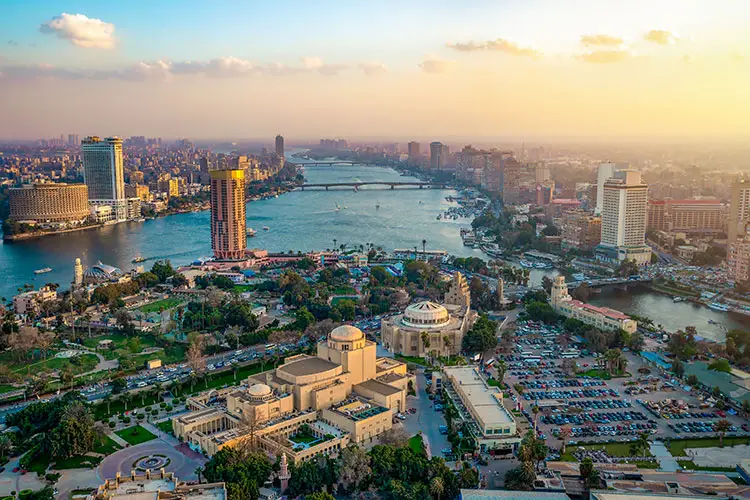
Great Sphinx of Giza
Similar to a Lamassu in Persian mythology or a Meduza in Russian folklore, a Sphinx is a mythical creature, half-human half-beast. In the case of a Sphinx, the creature usually exhibits the body of a lion and the head of a human, although this can vary somewhat. Unlike the pyramids, which were built using blocks from the limestone slab at Giza, the Sphinx is carved directly from this bedrock and therefore sits much lower than the Great Pyramids.
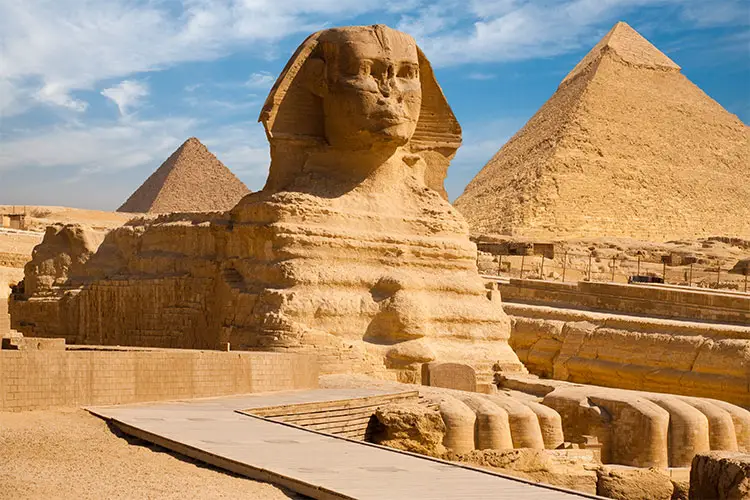
This monumental sculpture was built in the Old Kingdom during the reign of Khafre—2558–2532 BC—whose head it is thought to be depicted atop the statue. Khafre also built the second-largest pyramid at Giza, which is an interesting thought; perhaps this smaller structure was a gesture of respect to his father, Khufu—who built the Great Pyramid the generation before (This is just my supposition, I have no idea if this is actually the case!).
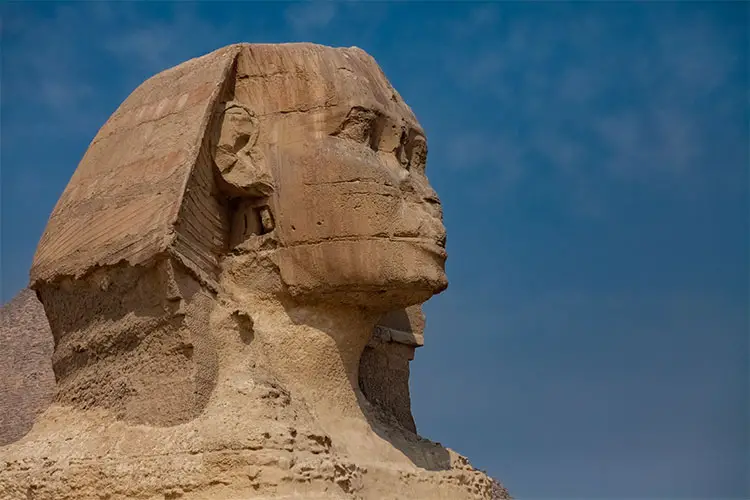
Cairo’s Museums
Aside from the city’s necropoli, there aren’t a lot of epic structures left to discuss for Cairo, however, one thing this historic capital city does have is a collection of the world’s best museums. First and foremost, at the time of writing in 2021, construction of the world’s largest archaeological museum—The Grand Egyptian Museum—is nearing completion at the Giza Necropolis; this colossal structure cost almost $1 billion to build—actual figure: $795 million—and will supersede the Museum of Egyptian Antiquities in downtown Cairo.
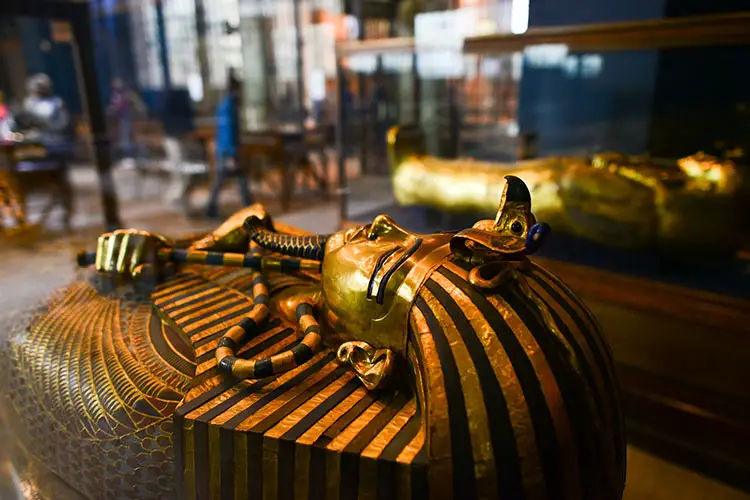
There are also two other museums I could find that might be of interest to you: The Coptic Museum boasts the world’s largest collection of Egyptian Christian artefacts and The Museum of Islamic Art is also considered one of the best in the world for its respective religion—whether you’re interested in religion or not, the dedication to their deities and therefore the intricacy of their art would be impossible to ignore.
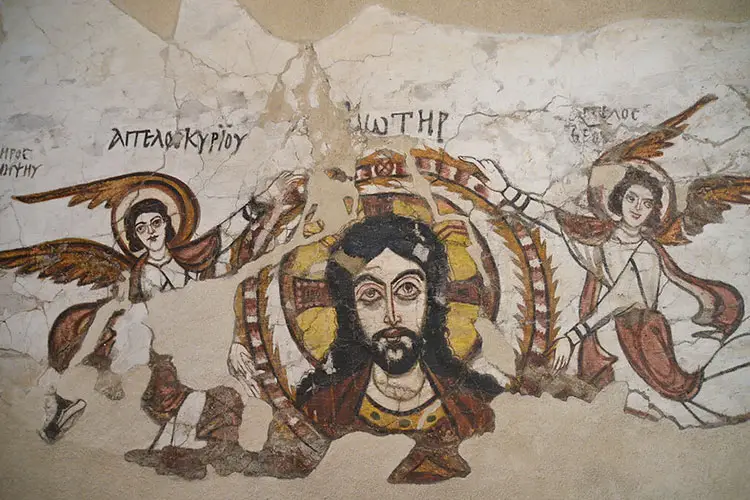
Cairo to Luxor
Each of the following examples is not that far from Luxor itself, however, the concept I’m trying to sell you on here is perhaps the greatest nerdy road-trip of all time! If you follow the Nile, the distance from the Museum of Egyptian Antiquities in Cairo to the Karnak Temple Complex in Luxor is just over 650 km; let’s assume you make one stop, this is easily done in a couple of days.
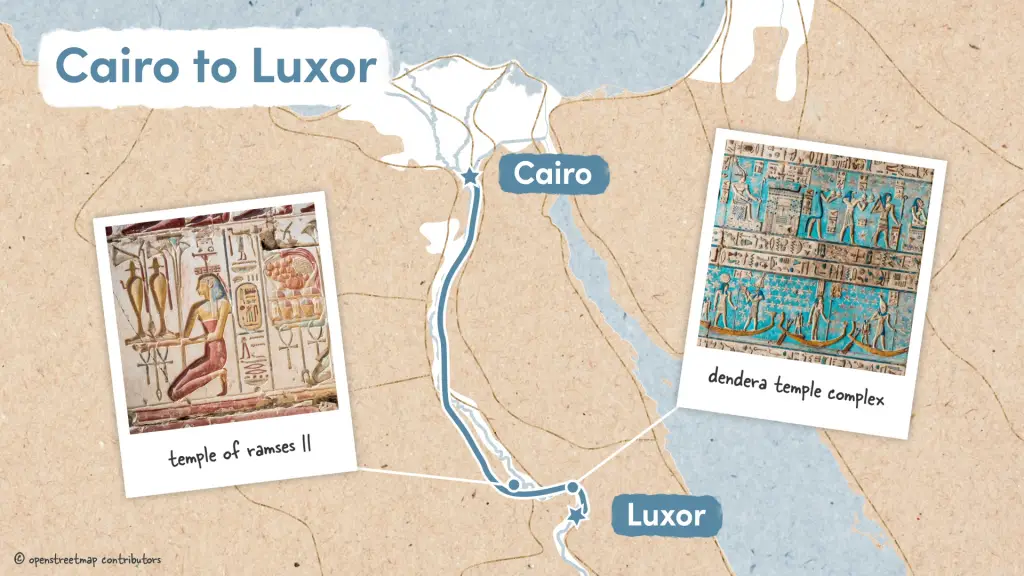
We’ll cover the next two sections of this road trip after these examples but rest assured, I have carefully thought this through and I am convinced this is the best way to see all of the sights of Ancient Egypt!
Abydos
Not just a single site, the name Abydos refers to an ancient city and one of the pivotal archaeological discoveries in Egypt. One of the most important discoveries at this site was found on the wall of the Temple of Seti I and is known as the Abydos King List. This table contains the names of 76 kings—in chronological order, of course—which helped Egyptologists piece together the history of Ancient Egypt. Interestingly, Tutankhamen was not included on this list, presumably because Seti I considered his reign illegitimate.
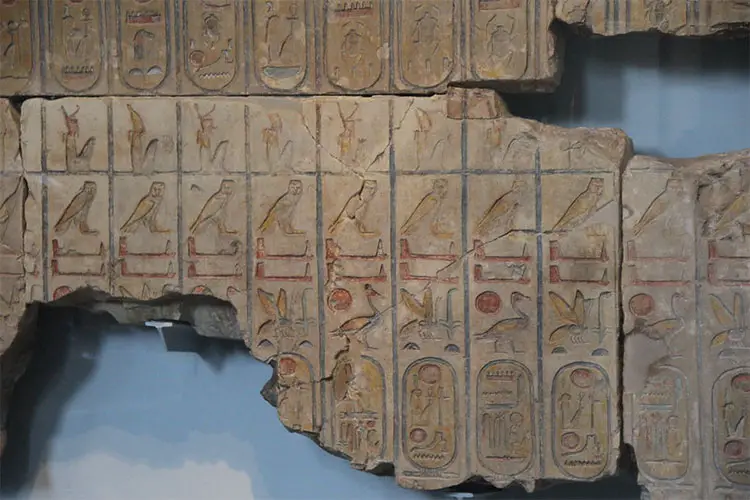
Abydos was one of the most important cities in Upper Egypt and, being heavily fortified to protect against invasion, also contains a fort built by King Khasekhemwy around 2700 BC. If you’re driving from Cairo, you will pass Abydos as you’re nearing Luxor but don’t forget to stop at the following site too.
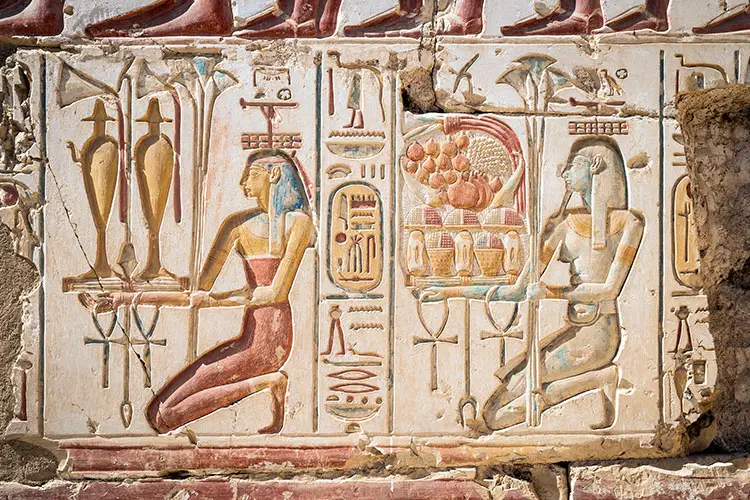
Dendera Temple Complex
One of the largest temple complexes in Egypt, this 40 square km complex is enclosed by a large mud-brick wall, which features two large gateways built by the Romans, Domitian and Trajan. Although the site was in use before 2000 BC, most of the ruins are from the Ptolemaic Period. Hathor Temple is the main temple; construction was started towards the end of Ptolemaic rule and finished during the Roman occupation.
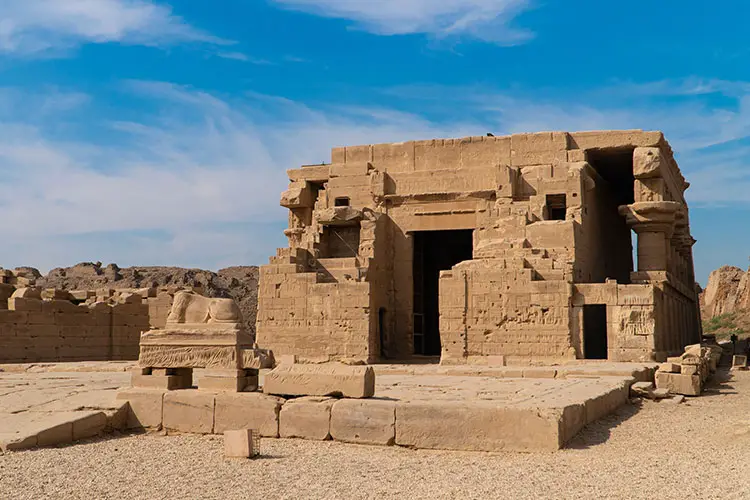
Similar to its contemporary in Karnak, Dendera’s Hathor Temple contains a great Hypostyle Hall (and a mini one too!), the ceiling of which is nothing short of breathtaking. This ceiling underwent significant restoration to remove hundreds of years worth of soot and revealed some of the most intricate and beautifully coloured relief in all of Egypt; this artwork is visible in the photo below and also the main image for this article.
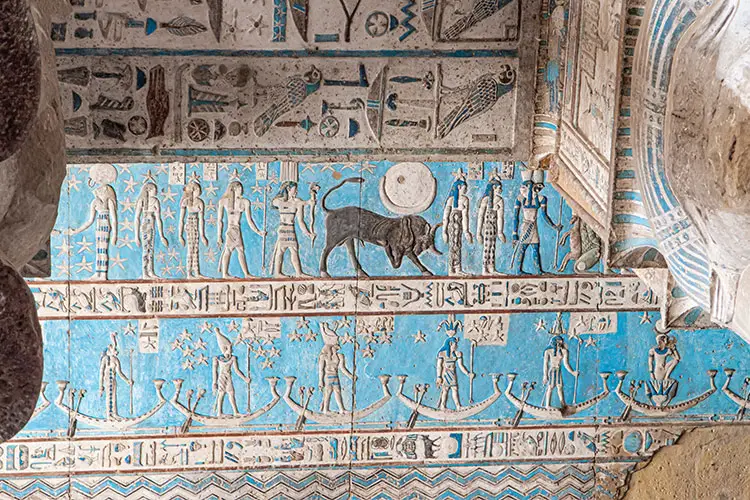
Luxor to Aswan
What do you think? This road trip is sounding pretty epic, right? Having sampled the sites in Cairo, enjoyed a relaxing 700 km drive along the Nile and marvelled at the wonders in Luxor, this next stretch of road is only 225 km, which is easily done in one day. Some of the best remains from the Ptolemaic Kingdom outside of Alexandria lie along this stretch of road, including the following examples and the Temple of Horus at Edfu—mentioned in Chapter One.
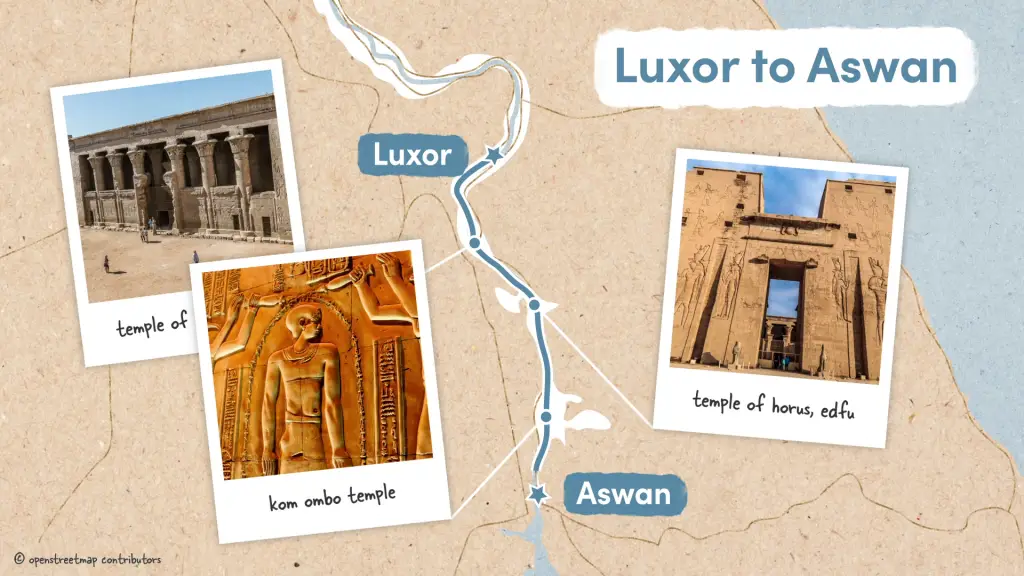
Temple of Khnum
To appreciate the significance of this temple we must first look at the deity to which it is dedicated: Khnum was the god of the source of the Nile. Given how integral the Nile was—and still is—to Egyptian society, it’s easy to see why this god was held in such high esteem. The temple was started during the Ptolemaic Period but also contains some of the latest sets of hieroglyphics, inscribed during Roman times.
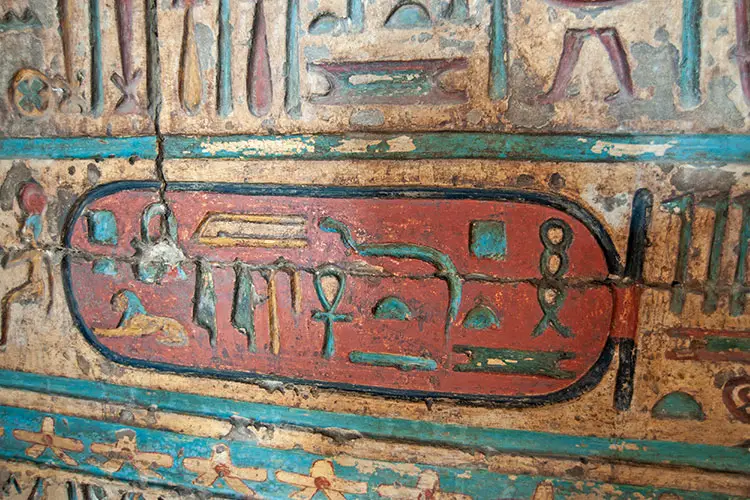
The architecture of this temple is fascinating, its gigantic red-sandstone roof is supported by rows of inscribed columns topped by Egyptian capitals. The temple is part of the larger Letopolis archaeological site—an ancient Egyptian city—however, many of the accompanying ruins are buried underneath modern-day buildings. Esna has a rich history and is also home to medieval ruins from the days of the Ottoman Empire, which are definitely worth checking out while you’re there.
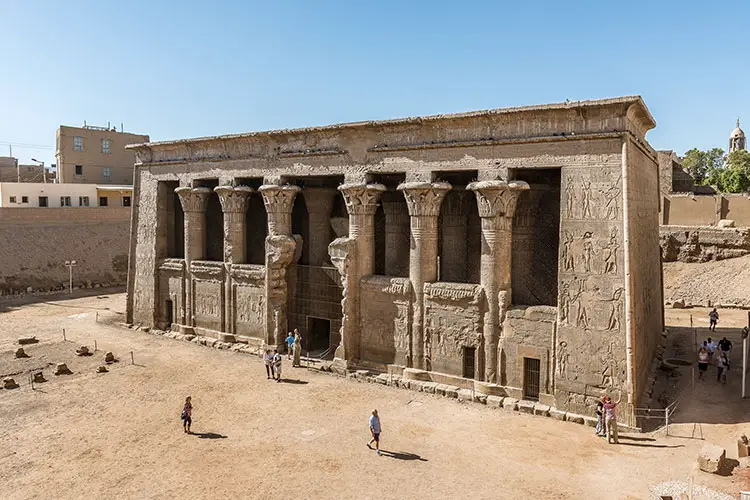
Temple of Kom Ombo
Now, this is the kind of temple I would have been proud to build! Perfectly symmetrical, the complex is made up of two sections, each dedicated to a separate god. Unfortunately, much of the temple has been eroded away and it’s in much worse condition than those at Edfu and Esna.
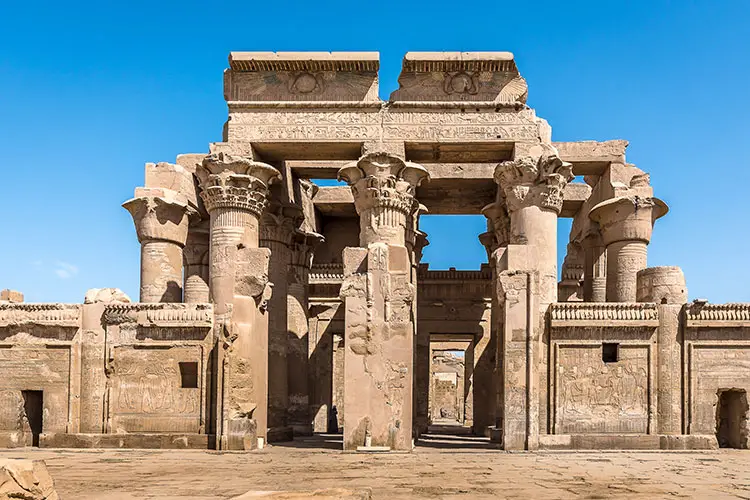
Nonetheless, the temple still exhibits some of the classic columns from this period, this time, I would argue, with a more interesting variation of capitals (but no less symmetrical!). If you’re stopping in Kom Ombo—just after Edfu, around an hour north of Aswan—be sure to check out the crocodile museum, which displays around 20 mummified crocodiles alongside some other interesting artefacts.
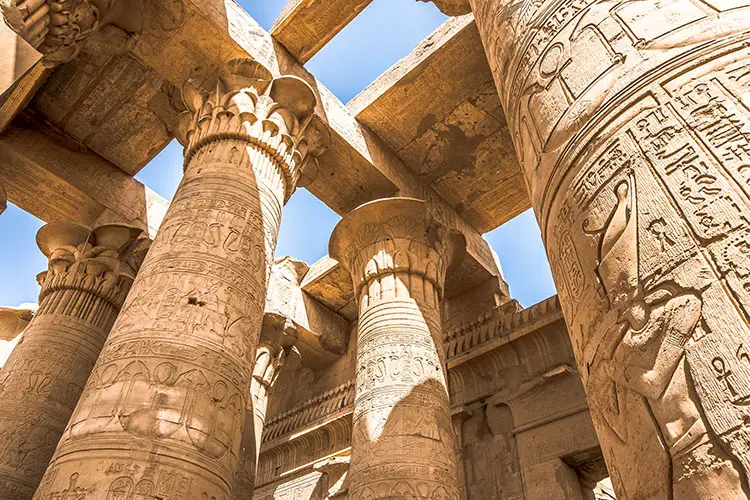
Aswan & Further South
Aswan is positioned at the first cataract of the Nile, a shallow stretch of water filled with islands, which now sits downstream from the two Aswan dams. In addition to Philae, this industrious city is home to Elephantine, another famous archaeological island in the middle of the Nile, which features several structures including another temple dedicated to Khnum.
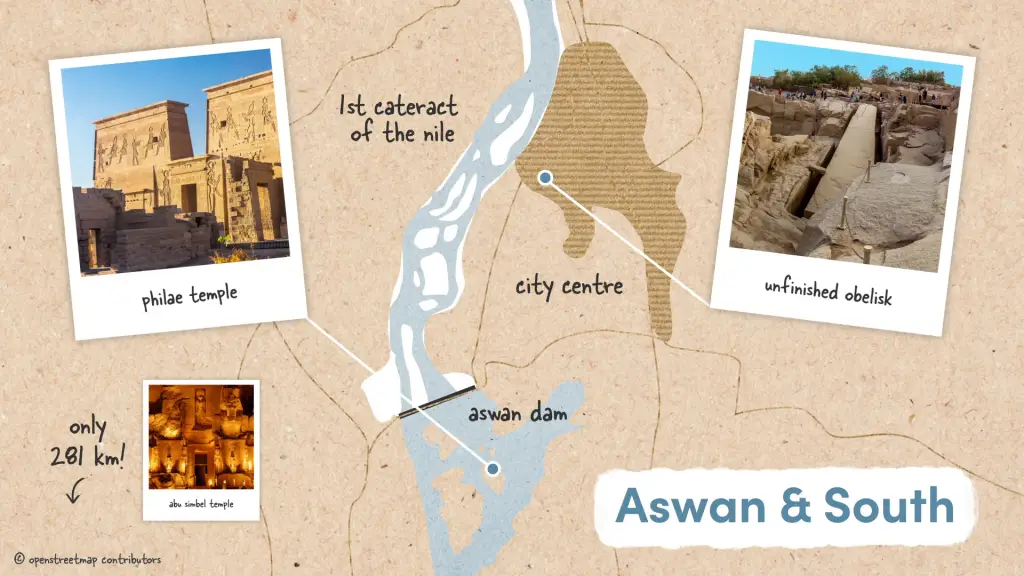
The cataract also contains a Botanical Garden and a nature reserve and is one of the most beautiful stretches of this iconic river.
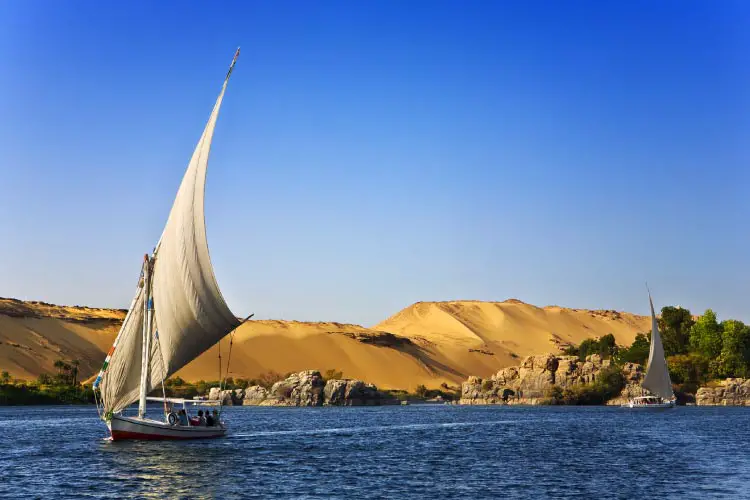
Unfinished Obelisk
I need to confess something; I started my research for this section trying to work out why Obelix—the loveable chunky sidekick to Asterix in the French cartoon series—was named after a tall skinny stone monument: he’s not. Evidently, not only are Obelix and Obelisk spelt differently but they have absolutely nothing to do with each other.

Anyhoo… As we’ve discovered, an Obelisk is a tall 4-sided stone pillar that tapers towards the top and is finished with a pyramid-like point. These monuments were referred to as “tekhenu” in Egyptian times and are decorated with inscriptions. The largest obelisk in history was commissioned by the pharaoh Hatshepsut but the project was abandoned once cracks started to appear in the granite from which it was being chiselled. The Unfinished Obelisk sits on the south side of the city and offers an interesting insight into how these monuments would have been constructed during ancient times.
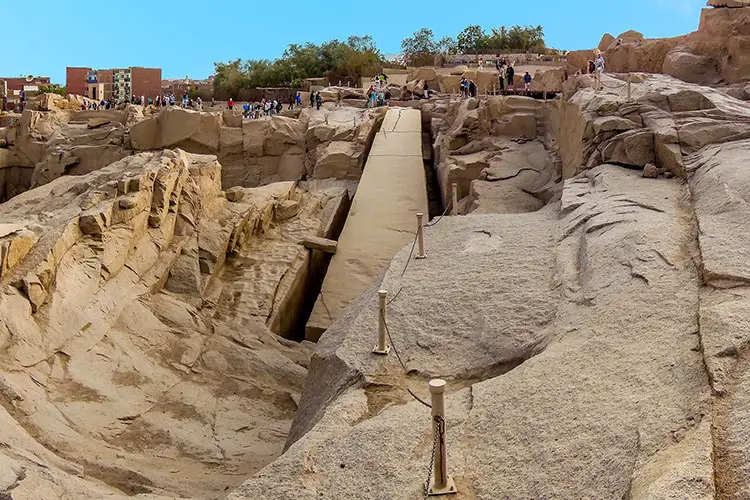
The Nubian Monuments
The previously discussed rescue mission of the temple and artefacts from Philae was part of a larger project—the UNESCO Nubian Salvage Campaign—to save what is commonly referred to as the Nubian Monuments. This collection of monuments stretches from Aswan in the north down to the Abu Simbel Temples near the Sudanese border.
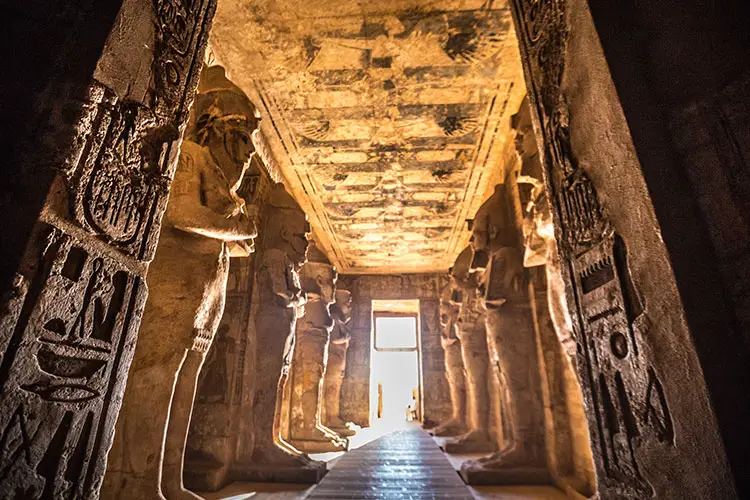
Admittedly, it’s a long way to drive to reach these temples but the fact that UNESCO added the whole collection of monuments to their world heritage list in 1979 does make the almost 300 km drive a little more appealing. The temples were originally carved out of a lower section of the mountainside during the reign of Ramesses the Great; they now rest—perfectly assembled—65 meters higher on the mountainside, a feat as impressive as the temples themselves. Nice work, UNESCO!
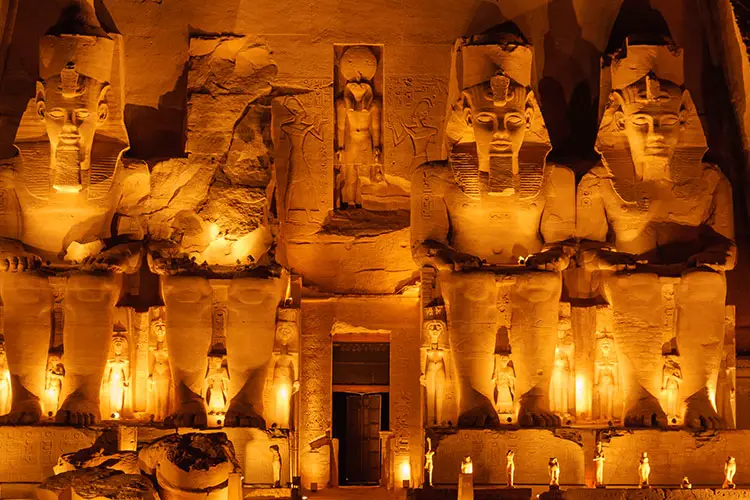
Honourable Mention: Alexandria
If I’ve managed to convince you of this once-in-a-lifetime road trip, consider this beautiful seaside city an optional extra. Alexandria was the capital from which the Ptolemaic pharaohs ruled, however, having already explored a significant portion of their legacy between Luxor to Aswan, I would consider Alexandria a bonus if you have the time.
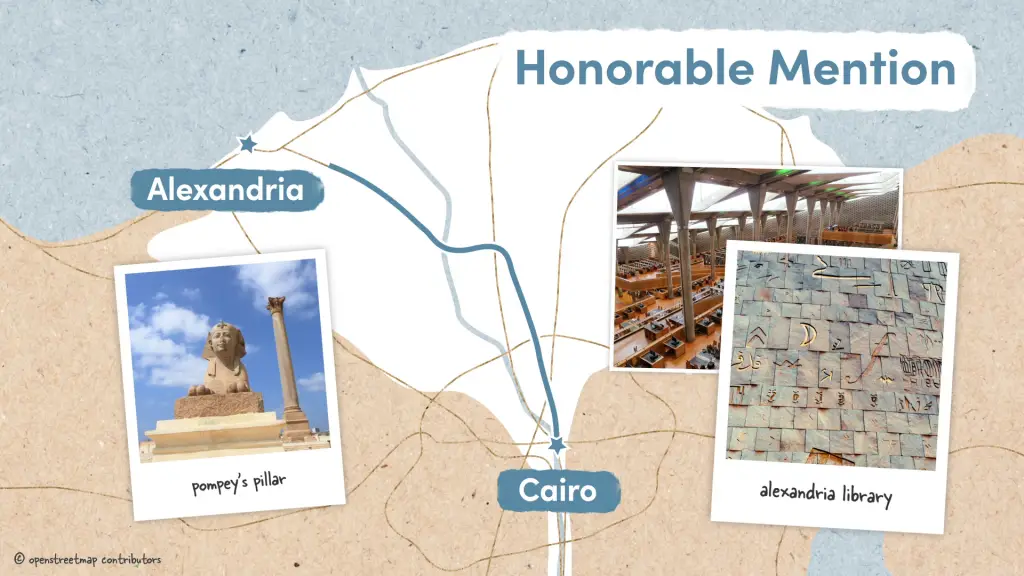
An important port city on the north coast of Egypt, all of the famous ruins here are from the Ptolemaic Period and beyond. Be sure to check out the Bibliotheca Alexandria, which commemorates the Library of Alexandria—lost during antiquity—and Pompey’s Pillar, which was created in dedication to Diocletian—the Roman Emperor from 284 to 305 AD.
Left – Alexandria Library & Right – Pompey’s Pillar
